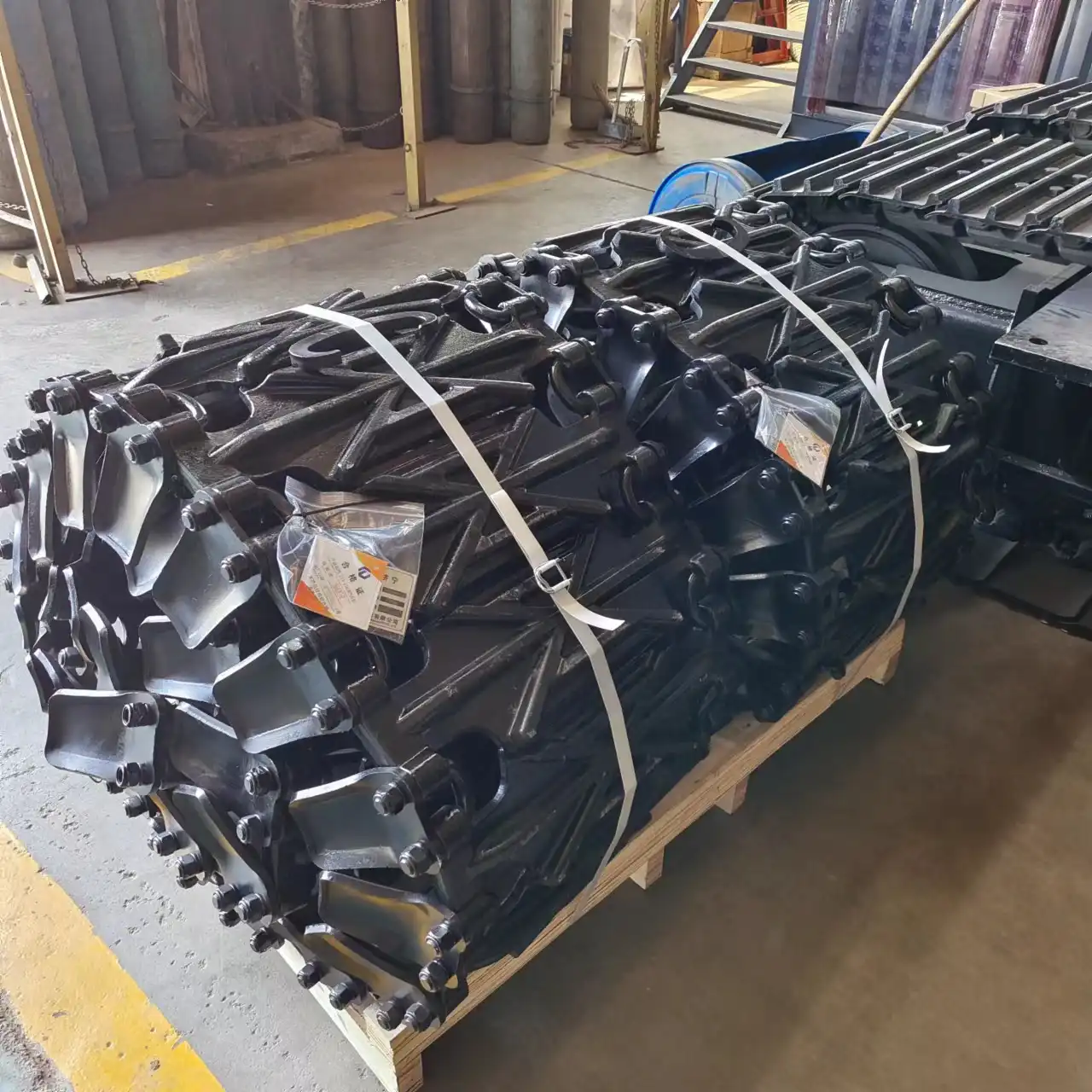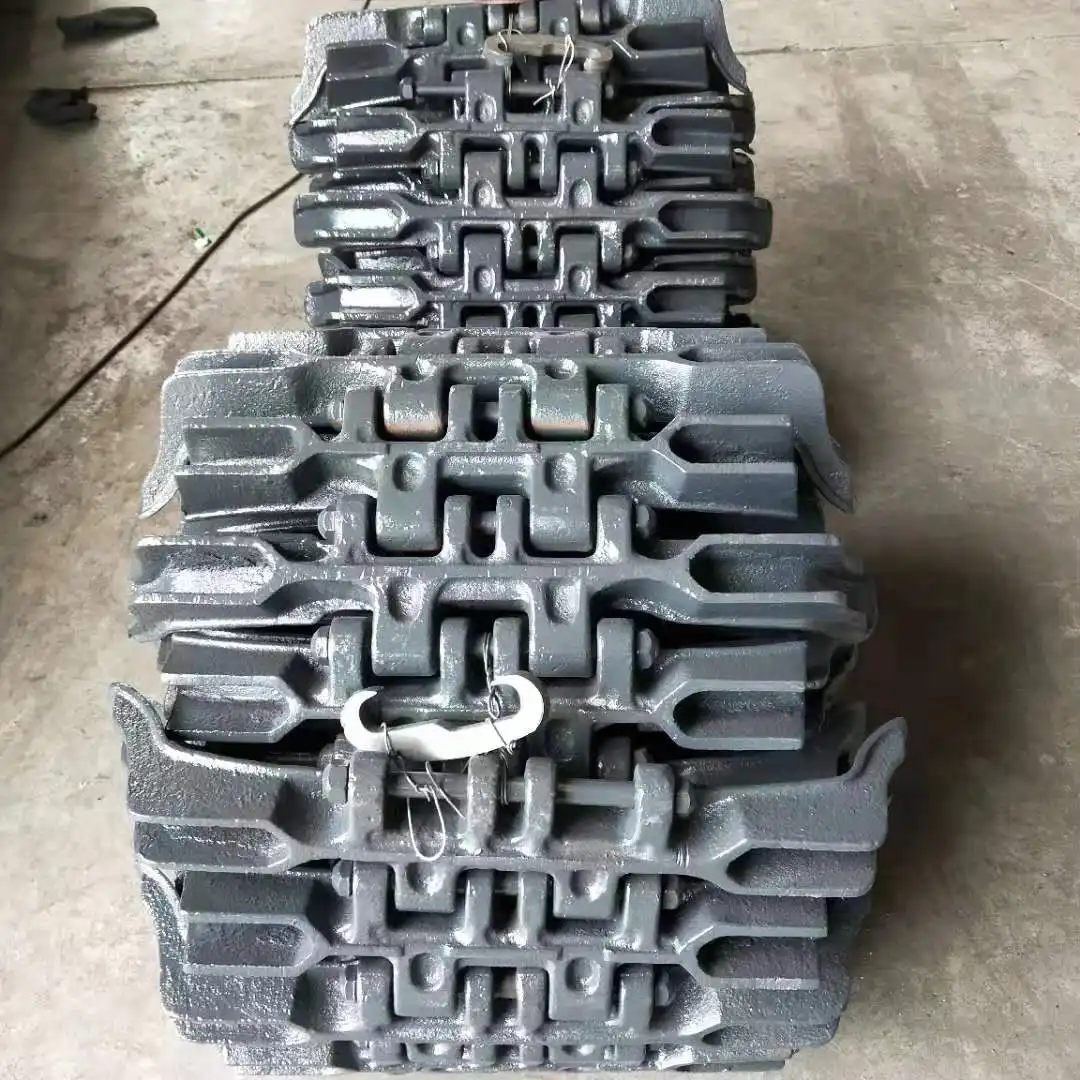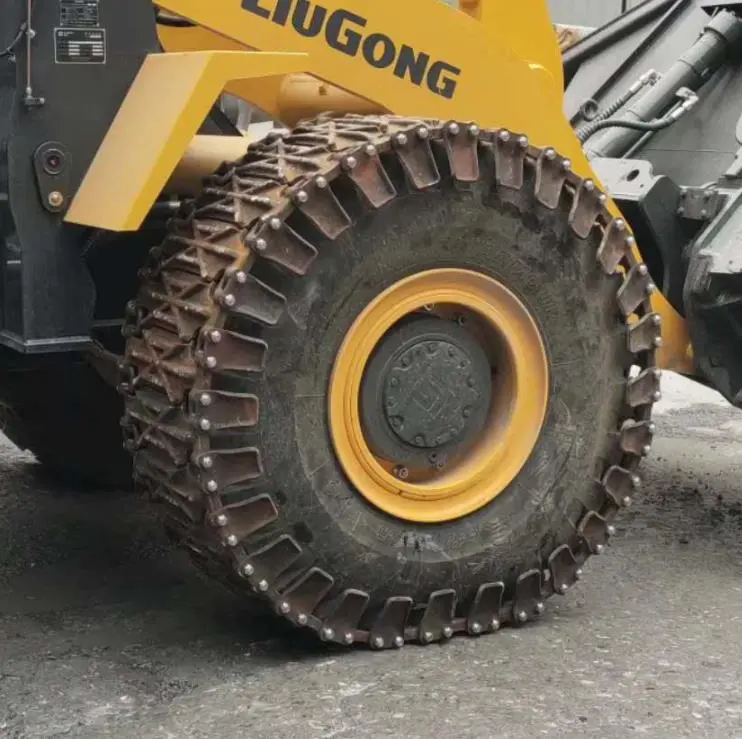How to measure tire chains?
Measuring tire chains correctly is crucial for ensuring optimal performance and safety, especially when it comes to loader tire protection chains. The process involves three main steps: getting the exact tire size, measuring the chain itself, and performing a final fit test. By following these steps, you'll be able to select the right tire chains for your heavy machinery, enhancing traction, efficiency, and tire longevity in challenging environments like mines, quarries, and construction sites.
Get Tire's Exact Size
Locate tire sidewall for size information
The first step in measuring tire chains is to locate the size information on your tire's sidewall. This crucial data is typically molded or stamped onto the outer surface of the tire. Look for a series of numbers and letters that represent the tire's specifications. For heavy machinery like loaders, you might find sizes such as 23.5-25 or 29.5-25.
Understand tire size code (e.g., P215/65R15)
Once you've found the tire size code, it's essential to understand what each part means. For loader tires, the code is usually straightforward. For example, in 23.5-25:
- 23.5 represents the tire's width in inches
- 25 indicates the rim diameter in inches
Understanding these numbers is crucial for selecting the correct loader tire snow chain. Remember that different machinery may use slightly different tire size formats, so always double-check with your equipment's manual if you're unsure.
Use tire size calculator for accurate measurements
To ensure precision, consider using a tire size calculator. These tools, often available online or through tire manufacturers, can help you convert between different sizing systems and provide additional information like the tire's circumference and revolutions per mile. This data can be particularly useful when selecting loader tire protection chains, as it helps ensure a perfect fit and optimal performance.
By taking the time to accurately measure and understand your tire size, you're laying the groundwork for selecting the right tire chains. This attention to detail will pay off in terms of improved traction, reduced wear, and enhanced safety for your heavy machinery operations.

Measure Tire Chain
Choose the right chain type for your loader
With your tire size in hand, it's time to focus on the tire chains themselves. Loader tire protection chains come in various types, each designed for specific applications and conditions. Consider factors such as the terrain you'll be operating on, the frequency of use, and the level of protection required. Some common types include:
- Square link chains: Ideal for general-purpose use and moderate conditions
- U-grip chains: Offer excellent traction on ice and packed snow
- Studded chains: Provide maximum grip in severe conditions
Selecting the right type of chain is crucial for ensuring optimal performance and longevity of both the chains and your loader tires.
Measure chain length and width for proper fit
Once you've chosen the appropriate chain type, it's time to measure for the perfect fit. To measure the chain length:
- Lay the chain flat on the ground
- Measure from one end of the cross chain to the other
- Ensure this measurement matches your tire's circumference
For width, measure across the face of the tire tread. The chain should cover the entire tread width without extending too far onto the sidewalls. Remember, a properly fitted loader tire protection chain should be snug but not overly tight, allowing for some flex as the tire rotates and deforms under load.
Consider cross-chain spacing for optimal traction
The spacing between cross chains is another critical factor to consider. Closer spacing provides more traction but can increase wear on both the chains and tires. Wider spacing may offer a smoother ride but could reduce grip in challenging conditions. For most loader applications, a balance between these extremes is ideal. Consult the manufacturer's recommendations for your specific model and intended use to find the optimal cross-chain spacing.
By carefully measuring and selecting your tire chains, you're ensuring that your loader will perform at its best, even in the most demanding conditions. Proper chain fit not only enhances traction and safety but also contributes to the longevity of your tires and the overall efficiency of your operations.

Final "Fit Test"
Install chains on tires following manufacturer's guide
After carefully measuring and selecting your loader tire protection chains, it's time for the final and crucial step: the fit test. Begin by installing the chains on your loader's tires, following the manufacturer's instructions meticulously. This process typically involves:
- Draping the chain over the tire
- Securing the inner side
- Rolling the loader forward to wrap the chain around the tire
- Fastening the outer side and any tensioning devices
Take your time during this process to ensure each step is done correctly. Proper installation is key to the chain's performance and longevity.
Check for proper tension and clearance
Once the chains are installed, it's essential to check for proper tension and clearance. The chains should be snug against the tire but not overly tight. You should be able to slip your hand between the chain and the tire with some resistance. Check the clearance between the chain and any nearby parts of the loader, such as fenders or suspension components. There should be at least 2 inches of space to prevent any contact during operation.
If adjustments are needed, most loader tire protection chains feature built-in tensioning devices. Use these to fine-tune the fit, ensuring even tension across the entire tire surface.
Perform a test drive to ensure secure attachment
The final step in the fit test is a short test drive. This is crucial for verifying that the chains are securely attached and functioning as intended. Follow these steps:
- Drive the loader slowly in a safe, open area
- Make gentle turns in both directions
- Apply the brakes gradually to test traction
- Listen for any unusual noises that might indicate loose components
After the test drive, park the loader and inspect the chains once more. Look for any signs of shifting or loosening. If everything looks good, your loader tire protection chains are ready for action.
Remember, even with a successful fit test, it's important to regularly check and maintain your tire chains. Periodic inspections and adjustments will ensure they continue to provide optimal protection and performance throughout their lifespan.

Accurately measuring and fitting loader tire protection chains is a critical process that ensures optimal performance, safety, and longevity of your equipment. By carefully following the steps outlined - from getting the exact tire size to performing the final fit test - you can significantly enhance your loader's capabilities in challenging environments. Remember, proper chain selection and installation not only improve traction and efficiency but also protect your valuable tires from premature wear and damage. Regular maintenance and inspections will keep your chains in top condition, ready to tackle the toughest jobs in mines, quarries, and construction sites.
FAQ
Q1: How often should I replace loader tire protection chains?
A1: The lifespan of loader tire protection chains varies depending on usage and conditions. Generally, they should be replaced when wear exceeds 50% of the original cross section or if there are visible signs of damage. Regular inspections can help determine when replacement is necessary.
Q2: Can I use the same tire chains for different types of loaders?
A2: While some chains may fit multiple loader models, it's crucial to match the chain to the specific tire size and load rating of your equipment. Always consult the manufacturer's recommendations to ensure compatibility and safety.
Q3: How do I maintain my loader tire protection chains?
A3: Regular maintenance includes cleaning debris from the chains, checking for wear or damage, and ensuring proper tension. After use in corrosive environments, rinse the chains with water and allow them to dry thoroughly to prevent rust.
Q4: Are there alternatives to traditional tire chains for loaders?
A4: Yes, alternatives include tire traction mats, steel studs, and rubber tracks. However, tire chains often provide the best combination of traction, durability, and versatility for most loader applications.
Q5: How do loader tire protection chains affect fuel efficiency?
A5: While chains may slightly increase fuel consumption due to added weight and rolling resistance, they can improve overall efficiency by enhancing traction and reducing wheel spin. This is especially true in challenging terrain where improved grip leads to more efficient operation.
Loader Tire Protection Chain Manufacturer
Tiannuo Machinery stands at the forefront of loader tire protection chain manufacturing, offering a comprehensive range of high-quality products designed to meet the diverse needs of the heavy equipment industry. Our expertise extends beyond tire chains to include a wide array of specialized machinery and accessories for railway maintenance, excavator modifications, and engineering applications. With a focus on innovation and durability, we provide solutions that enhance productivity and safety across various sectors, including mining, construction, and forestry. Our tire protection chains are engineered to triple tire lifespan, boost traction, and reduce fuel consumption, making them an essential investment for operations in challenging terrains. For inquiries about our products, including our 23.5-25 model chains for 50 Loaders, contact us at rich@stnd-machinery.com. Trust Tiannuo Machinery to deliver the quality and performance your heavy equipment demands.
References
- Tire Chain Association: "Best Practices for Measuring and Installing Heavy-Duty Tire Chains" (2023)
- Journal of Construction Engineering: "Impact of Tire Protection Chains on Loader Performance in Extreme Conditions" (2022)
- Mining Safety Quarterly: "Enhancing Traction and Safety: A Comprehensive Guide to Loader Tire Chains" (2023)
- International Conference on Heavy Equipment Technology: "Advancements in Tire Protection Systems for Construction Machinery" (2022)
- Society of Automotive Engineers: "Standards and Specifications for Industrial Tire Chains" (2023)
- Environmental Science & Technology: "Reducing Environmental Impact through Proper Tire Chain Usage in Heavy Machinery" (2022)
About Author: Arm
Arm is a leading expert in the field of specialized construction and railway maintenance equipment, working at Tiannuo Company.

